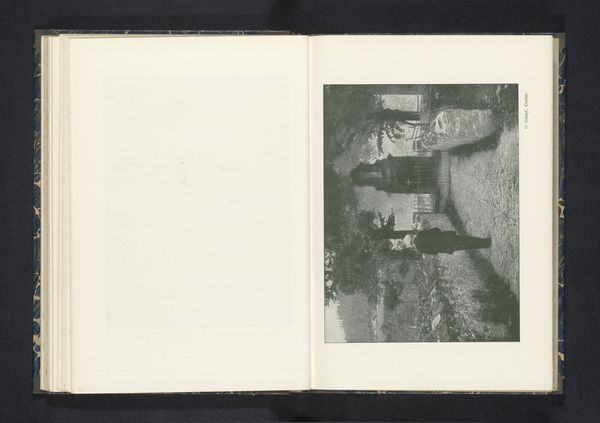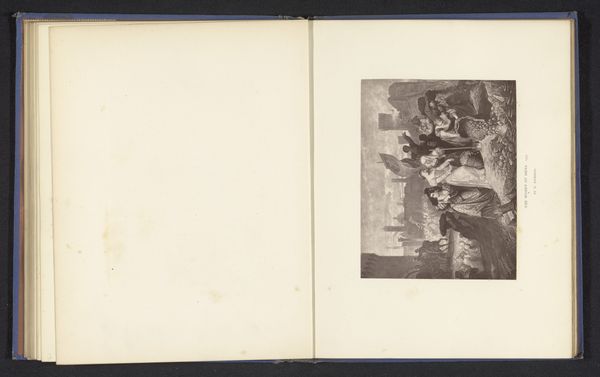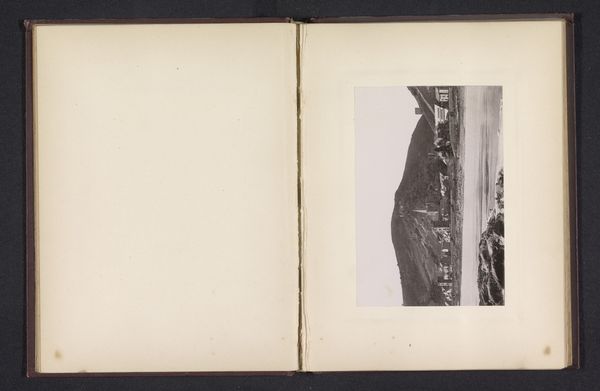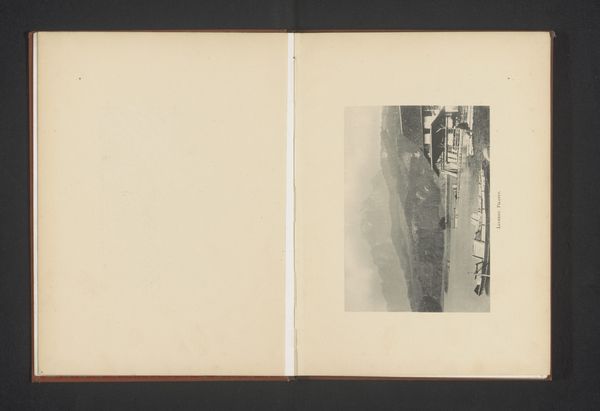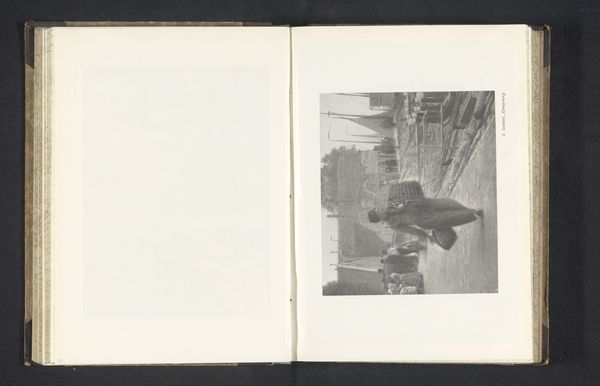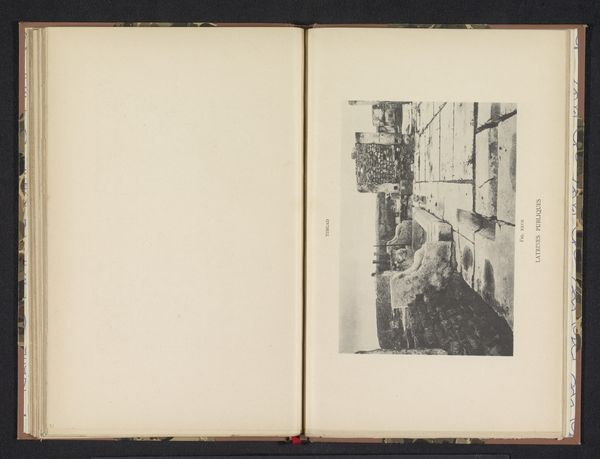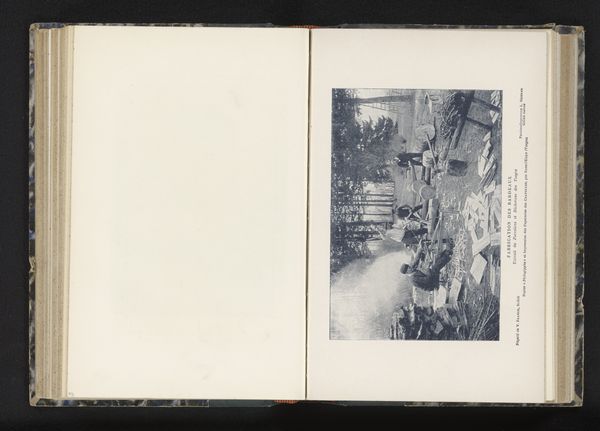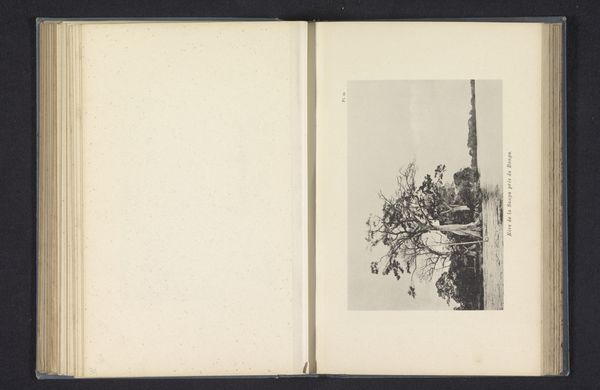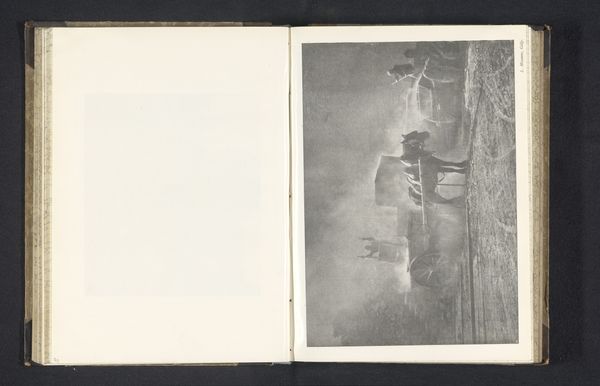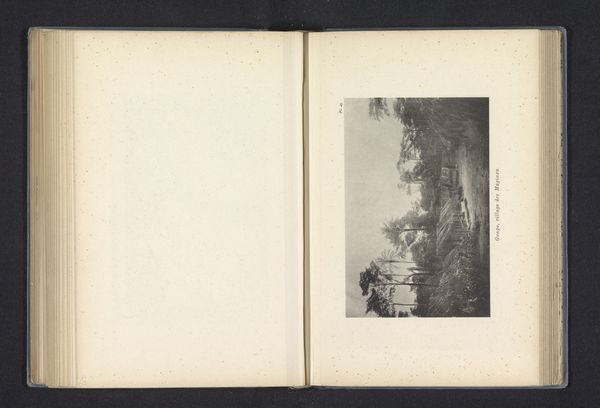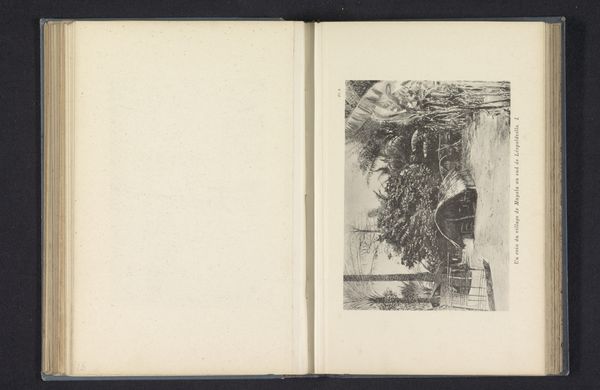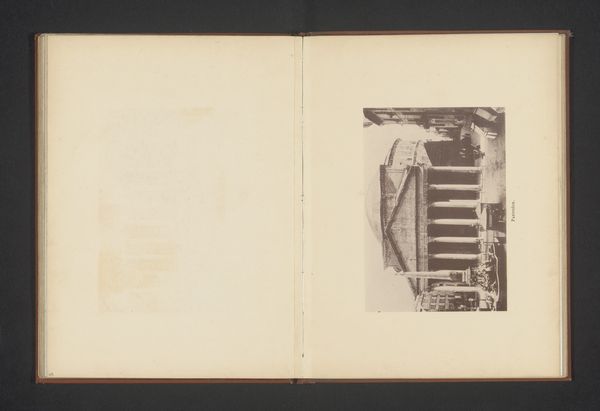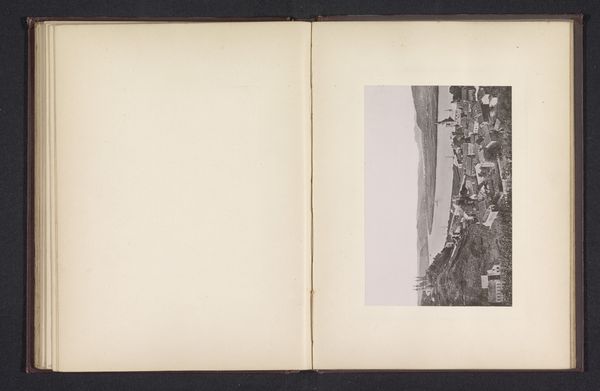
photography, gelatin-silver-print
#
landscape
#
photography
#
gelatin-silver-print
#
genre-painting
#
paper medium
#
realism
Dimensions: height 145 mm, width 180 mm
Copyright: Rijks Museum: Open Domain
Curator: Welcome. Before us, we see Th. Schneider's photograph "Schaapsherder met kudde," or "Shepherd with Flock," created before 1903, a gelatin silver print. What are your initial impressions? Editor: It strikes me as a study in texture. The dense, almost woolly, quality of the sheep contrasts with the smoother tones of the shepherd's figure. And the composition is remarkably tight, focusing our gaze on the group dynamic. Curator: Absolutely. The density is worth considering, particularly because the production of gelatin silver prints during that era speaks to broader social trends: the availability of photography to a wider public and the developing visual culture around rural life. Were such scenes idealized? Documented? Or something in between? Editor: I find the formal aspects far more compelling. Observe the artist's choices—how the repetition of forms within the flock creates rhythm, balanced by the singular, vertical anchor of the shepherd. It’s masterful use of shape. Curator: But aren't those very shapes laden with context? The material reality is that sheep meant wool, sustenance, livelihood. This isn’t just form for form’s sake, is it? Editor: I agree that the socio-economic considerations surrounding these are interesting, however I am far more curious to interpret the geometry and the interplay between darkness and light. The photograph has many qualities similar to paintings of the time which cannot be overlooked, suggesting this is a "painterly photograph" made to align itself with "high art". Curator: And that ambition itself signifies the social stratification of art, and how photography, still a relatively new medium, was perceived in relation to painting. Think about the labor involved in producing both the print and raising the sheep! Editor: True, and what this photographic technique allowed Schneider to achieve. However I cannot shake that in all of this talk about historical content, social production, the impact of light on surface—the power in the overall unity in play tends to fade into the background. Curator: Perhaps the photograph, as a material artifact, encapsulates both: artistic intent *and* a complex web of historical and social relationships? Editor: Perhaps that's a harmony we can appreciate simultaneously.
Comments
No comments
Be the first to comment and join the conversation on the ultimate creative platform.
